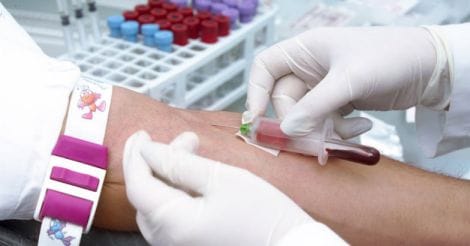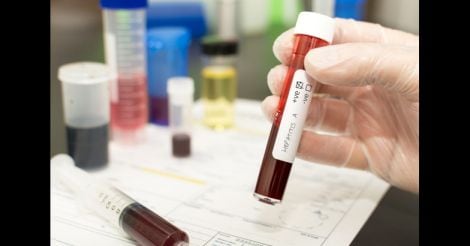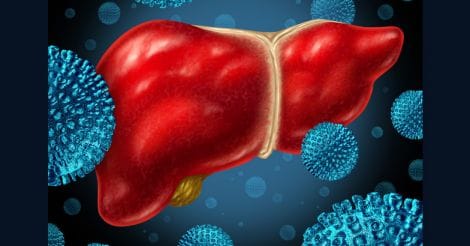Every year, outbreaks of jaundice occur in Kerala. The most common cause of such jaundice is Hepatitis A. The following are some pertinent questions and answers on this topic.
What is jaundice?
Jaundice is yellow discoloration of skin and eyes. It is due to deposition of a yellow-coloured pigment called bilirubin in these tissues. This occurs when the blood level of bilirubin rises.
Why do people fear jaundice?
Unfortunately, many people associate the word jaundice with serious liver disease. Bilirubin level can rise from dozens of reasons, some of which are completely harmless, some really serious and others, not so serious. What matters most is the correct diagnosis; that is to find out the exact reason for jaundice in each case.
 Hepatitis means inflammation of the liver. Photo: Getty Images
Hepatitis means inflammation of the liver. Photo: Getty ImagesFor example, in a person with Gilbert syndrome, higher level of bilirubin is seen. But it is completely harmless and no treatment is necessary. However, in a person with liver cirrhosis, rising level of bilirubin can sometimes mean liver failure.
What is hepatitis?
Hepatitis means inflammation of the liver. It can occur due to a variety of reasons. For example, those who drink alcohol heavily can get alcoholic hepatitis. It can also occur as a result of medication use, herbal or otherwise. Those with certain virus infections get viral hepatitis.
 Those who live in areas where outbreaks occur have greater chance of getting infected, especially if they have not been vaccinated. Photo: Getty Images
Those who live in areas where outbreaks occur have greater chance of getting infected, especially if they have not been vaccinated. Photo: Getty ImagesWhen a person’s liver is infected with the hepatitis A virus, it is called acute hepatitis A. Incidentally, the term acute means ‘of recent onset’, and does not mean serious, as is commonly misunderstood. Other viruses cause hepatitis too, such as the hepatitis B virus, as detailed in my earlier article.
How do I know if I have hepatitis A?
Those who live in areas where outbreaks occur have greater chance of getting infected, especially if they have not been vaccinated. Not everyone with hepatitis A develops symptoms. Among those who do, mild body pain and fever, followed by loss of appetite and nausea are common. People with such symptoms must consult a doctor, who will decide whether to proceed with investigations. Not all people with these symptoms need detailed testing.
 In a person with hepatitis A, these is no correlation between the absolute value of SGOT or SGPT and the severity of liver damage. Photo: Getty Images
In a person with hepatitis A, these is no correlation between the absolute value of SGOT or SGPT and the severity of liver damage. Photo: Getty ImagesIn acute hepatitis A, blood tests will show remarkably high levels of SGOT and SGPT, and the antibody test for hepatitis A - also called IgM anti hepatitis A antibody - becomes positive.
My SGOT and SGPT are above 3000, while normal levels are less than 40. Isn’t that dangerous?
This is a common concern among those who are diagnosed with acute hepatitis A, the high numbers scare them into believing that they have liver failure. The fact is, even though the numbers seem dramatically high, this does not necessarily mean that the liver is proportionately compromised. High SGOT and SGOT levels occur when there is injury to the liver, whether it is from a virus, alcohol, medications or otherwise.
 In acute hepatitis A, blood tests will show remarkably high levels of SGOT and SGPT, and the antibody test for hepatitis A - also called IgM anti hepatitis A antibody - becomes positive.
In acute hepatitis A, blood tests will show remarkably high levels of SGOT and SGPT, and the antibody test for hepatitis A - also called IgM anti hepatitis A antibody - becomes positive. In the vast majority of patients with hepatitis A, this is a harmless self-limited rise. After three or four weeks, the levels will gradually come down to normal.
In other words, in a person with hepatitis A, these is no correlation between the absolute value of SGOT or SGPT and the severity of liver damage. It simply tells us that there is liver injury, but does not say how much. In rare instances though, such numbers could mean liver failure, and the doctor will be able to tell the difference.
How does it spread?
The virus spreads through contaminated food and water. It is common in places where food is prepared in unhygienic conditions. The virus enters through the mouth and finds its way to the liver. Those with active hepatitis A infection will shed large numbers of virus particles in their bile. This bile flows into the intestine, and gets excreted. When food or drinking water gets contaminated with feces, the virus spreads to other people.
 The virus can be present in contaminated water or food that has not been cooked at sufficiently high temperature.
The virus can be present in contaminated water or food that has not been cooked at sufficiently high temperature.Outbreaks are reported from hostels and other establishments where inmates have no option but to eat from the canteen. The virus can be present in contaminated water or food that has not been cooked at sufficiently high temperature. Food can also get contaminated after preparation by an infected food handler or through houseflies; therefore, care should be taken not to keep food exposed for a long time.
It is worth noting that the virus can remain alive for over a month outside the human body, for example on cooking utensils or any other contaminated material. The virus is not transmitted through saliva.
When does a person start spreading the virus?
The virus starts spreading two weeks before symptoms develop, which is long before the person realizes that he has developed an infection. This poses difficulty in containing the spread of the virus in communities. Once jaundice develops, the rate of virus excretion drops and the chance of spreading infection is lower.
Should the jaundiced patient be isolated to prevent spread of the virus?
There is no need to isolate the patient. Infection can spread only when the patient’s feces contaminates the food or water supply of others. Those with hepatitis A should therefore not engage in food handling. Adequate handwashing with soap after toilet use will help prevent the virus spreading to other people at home. House-hold bleach can be used to clean potentially contaminated areas.
How can we prevent the spread of hepatitis A?
At a community level, those who prepare food for large numbers of people must ensure that they adhere to accepted standards of hygiene. Public water supply benchmarks must be maintained, taking every care to prevent fecal contamination.
 The virus starts spreading two weeks before symptoms develop, which is long before the person realizes that he has developed an infection. Photo: Getty Images
The virus starts spreading two weeks before symptoms develop, which is long before the person realizes that he has developed an infection. Photo: Getty ImagesUnfortunately, preventive measures are overlooked during times of good health. Once an outbreak happens, it is too late to introduce effective preventive measures for obvious reasons. Food safety inspections therefore have to be routinely carried out, not just during the time of an epidemic.
At a personal level, proper hand hygiene and ensuring safe drinking water are important. Boiling the water for one full minute kills the hepatitis A virus. Chlorination is also effective.
Is vaccination available? What is herd immunity?
Vaccination against hepatitis A is safe, and provides lifelong protection. Vaccination is recommended at age 1, and is available for adults. It can also be given to those who have had close and personal contact with an infected person.
 Vaccination against hepatitis A is safe, and provides lifelong protection. Photo: Getty Images
Vaccination against hepatitis A is safe, and provides lifelong protection. Photo: Getty ImagesVaccination has the ability to indirectly prevent infection even among those who are not vaccinated. This phenomenon is called herd immunity, an important public health concept.
The concept of herd immunity or herd effect is easy to understand. In the case of contagious diseases such as hepatitis A, the virus spreads from person to person. The virus naturally spreads faster when no one in the community is vaccinated. This is because a person who has not been vaccinated not only picks up the infection, but also spreads it to others.
However, as the virus is not able to enter the body of a vaccinated person, there is no chance of such a person spreading the virus further.
Thus, the presence of vaccinated people in the community serves as a roadblock, and helps limit the free passage of the virus. The greater the percentage of vaccinated people, the lesser the chance of an outbreak.
When should the patient be hospitalised?
There is no need to routinely admit all patients with hepatitis A to the hospital. Hospitalization may sometimes be required to evaluate jaundice and diagnose the exact cause. Though most cases are benign, occasionally, when the doctor suspects a more severe affliction of the liver, hospitalisation is indicated for closer monitoring. If a patient with hepatitis A is vomiting and unable to keep food down, spending a few days in the hospital will be helpful to ensure adequate nutrition and fluid balance.
Are antiviral medications required to get rid of hepatitis A virus?
As the body’s immune system is able to destroy the virus, there is no need for antiviral agents in the case of hepatitis A.
 There is no need to routinely admit all patients with hepatitis A to the hospital. Photo: Getty Images
There is no need to routinely admit all patients with hepatitis A to the hospital. Photo: Getty ImagesIt is important, however, to avoid exposure to unauthorized and unscientific treatments during the illness, which can potentially make a bad liver worse. This is because the liver is the final frontier for all medications – it is the job of the liver to correctly identify and detoxify each medication that is administered, regardless of the type or class. A jaundiced liver can suffer further injury from this additional burden of work; such damage is worse among those who already have chronic liver disease from other causes. In other words, the less medicines, the better.
Is Hepatitis A dangerous?
Hepatitis A virus is the least harmful among viruses that infect the liver. In very few instances, it can cause a prolonged jaundice. Rarely, deaths can occur in the very old or those are already weak from other diseases of the liver such as from alcoholism or hepatitis C.
The problem with hepatitis A is that it affects largely the young adult population, generating sick days at work or time off studies. This leads to loss of productivity in addition to poor quality of life during the illness.
The real danger about hepatitis A is misdiagnosis – this happens when people falsely assume that all jaundice is due to hepatitis A virus infection, and neglect to investigate further. Consequently, other more serious conditions are sometimes missed. It is important therefore to diagnose the exact cause of jaundice first, before deciding on treatment.
In summary, Hepatitis A is a common benign cause of outbreaks of jaundice. As jaundice can occur from several causes, establishing a correct diagnosis is important in each case. Most cases of hepatitis A require no specific medications, and the liver will return to its normal health in about two months. Hepatitis A is preventable by vaccination. Public health measures are important in reducing the burden of disease in the community.
References
Hepatitis A outbreaks in Kerala: a matter of concern
The CDC on safe handling of water to prevent spread of hepatitis A virus
All herbs are not harmless: they are an established and under-recognised cause of liver damage.
(The author is a senior consultant gastroenterologist and deputy medical director, Sunrise group of hospitals)


























 Bilirubin level can rise from dozens of reasons, some of which are completely harmless, some really serious and others, not so serious. Photo: Getty Images
Bilirubin level can rise from dozens of reasons, some of which are completely harmless, some really serious and others, not so serious. Photo: Getty Images